By Rick VanSickle
If there is one thing we can all agree on (I hope) it is that Ontario Riesling, no matter how you slice and dice it, is a superstar grape in Ontario.
It’s little wonder that Riesling is the most planted vinifera in Ontario with 10 tonnes produced in 2019, just sneaking by Chardonnay in second place.
It does so well in the cool climate of Ontario, can be shaped into many different styles from dry to off-dry to sparkling to sweet and all the way to super sweet late harvest and icewines, and is among the most affordable VQA wines you can buy. It can also be magical in the hands of the right winemaker using grapes from top single vineyards scattered throughout wine country.
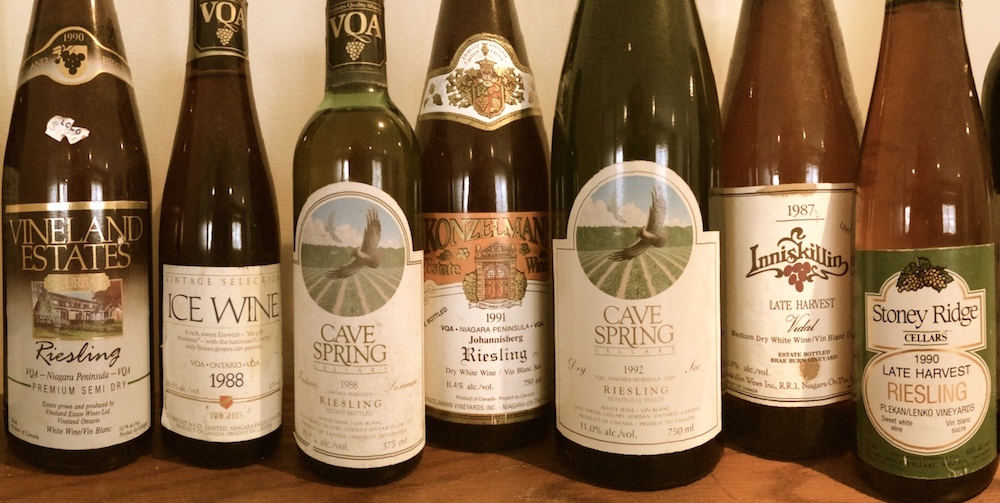
Riesling is steeped in the modern history of winemaking in Ontario, which began in the early 1970s when it topped the list of vinifera plantings (and is hanging tough today). In 1976, with the assistance of a federal agricultural grant, the first Riesling was planted at Vineland Estates on the Twenty Mile Bench. The vines came from the late Herman Weis, a nurseryman in Germany’s Mosel Valley, and the Riesling program under winemaker Brian Schmidt, particularly sourced from the estate’s historic St. Urban Vineyard, continues to be some of the best Rieslings produced in Ontario to this day. By the early 1980s, Riesling’s reputation had started to spread, attracting the interest of German émigrés Herbert Konzelmann and Ewald Reif, as well as Austrian Karl Kaiser, who had co-founded Inniskillin — Ontario’s first new winery since Prohibition — in 1974. This group planted on the flat lands of Niagara-on-the-ake near the shores of Lake Ontario.
But it was a family of Italian origin that moved Riesling into the mainstream of Ontario’s wine culture, where it has remained to this day. Len and Tom Pennachetti founded Cave
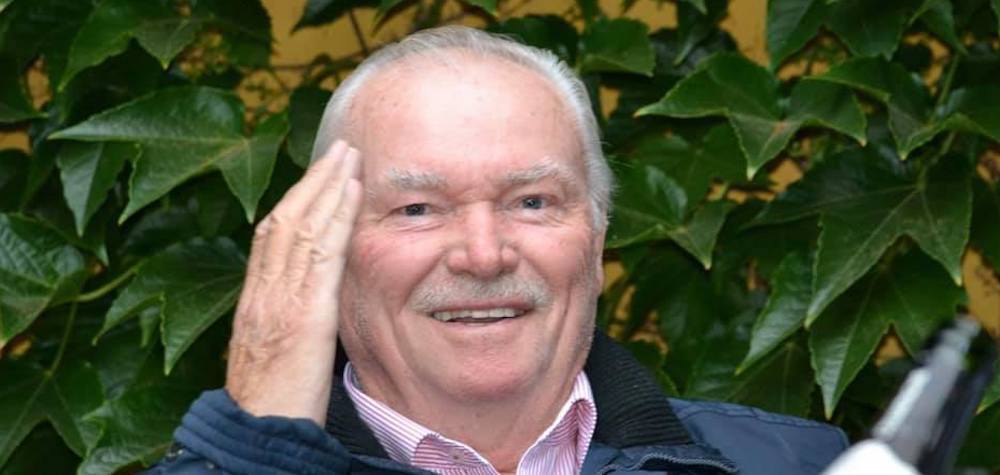
Spring winery, based on a spectacular Riesling vineyard inland on the Niagara Escarpment benchland near Beamsville. They make estate-grown Rieslings — dry and off-dry, a late harvest called Indian Summer, as well as one of the first Riesling icewines. Today, these remain staples on wine lists throughout Ontario, indeed all of Canada and around the world.
Dozens of other Ontario producers have since joined in, but it was new Niagara “bench” wineries such as Thirty Bench, Flat Rock Cellars, Tawse, Henry of Pelham and Hidden Bench, to name a few, that blew the doors off this intriguing grape in the 2000s and elevated Riesling by aiming high in terms of quality and price. They in turn have given rise to Riesling specialists such as Charles Baker, 2027 Cellars, Leaning Post and Fielding Estate making tiny quantities from single vineyards.

Most of Ontario’s Riesling is still based on the Weis clone (21B) imported from Germany’s Mosel Valley. When grown on the bench sites it produces racy examples with citrus, green apple and mineral notes. Two other clones play a minor role — an Alsatian, Clone 49 and Clone 239 from Geisenheim, Germany. A non-bench Riesling vineyard, planted in 1978 to the Alsace clone by Paul Bosc of Chateau des Charmes, continues to turn out outstanding dry, late harvest and Riesling icewines.
With over a quarter century of Riesling experience, Ontario is clearly a New World leader with this classic grape — not so much as a mass market, easy sipping wine, but as a terroir-driven, collectible and fine dining wine that ages well and reflects individual vintages and sites. It is clearly one of the Ontario grapes considered world class and only getting better as more winemakers choose to explore the boundaries of exactly where you can take it.
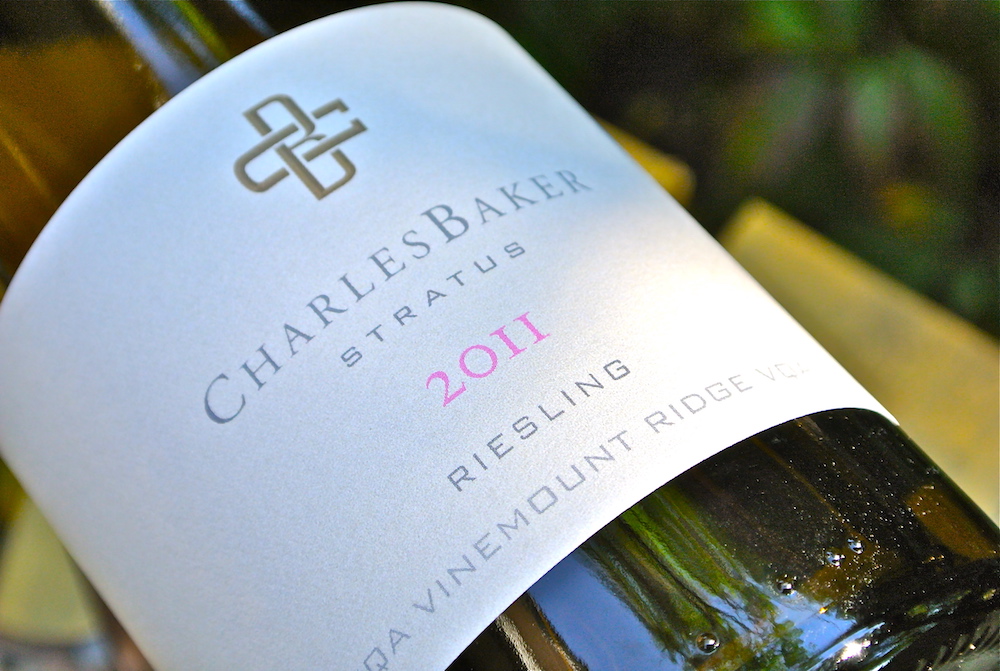
Baker, not only the founder of Charles Baker wines, but also the director of marketing and sales at Stratus Vineyards, was the first to devote his entire portfolio to Riesling. His top bottling, the iconic Picone Vineyard Riesling sourced from a unique parcel in the Vinemount Ridge sup-appellation, turned heads from the first vintage he produced and to this day has a cult-like following.
And now, a couple of buddies who met in 2004 while going to high school on Vancouver Island, have reunited in Niagara after both finished university and our chasing their dream of making Niagara Riesling and ONLY Riesling.
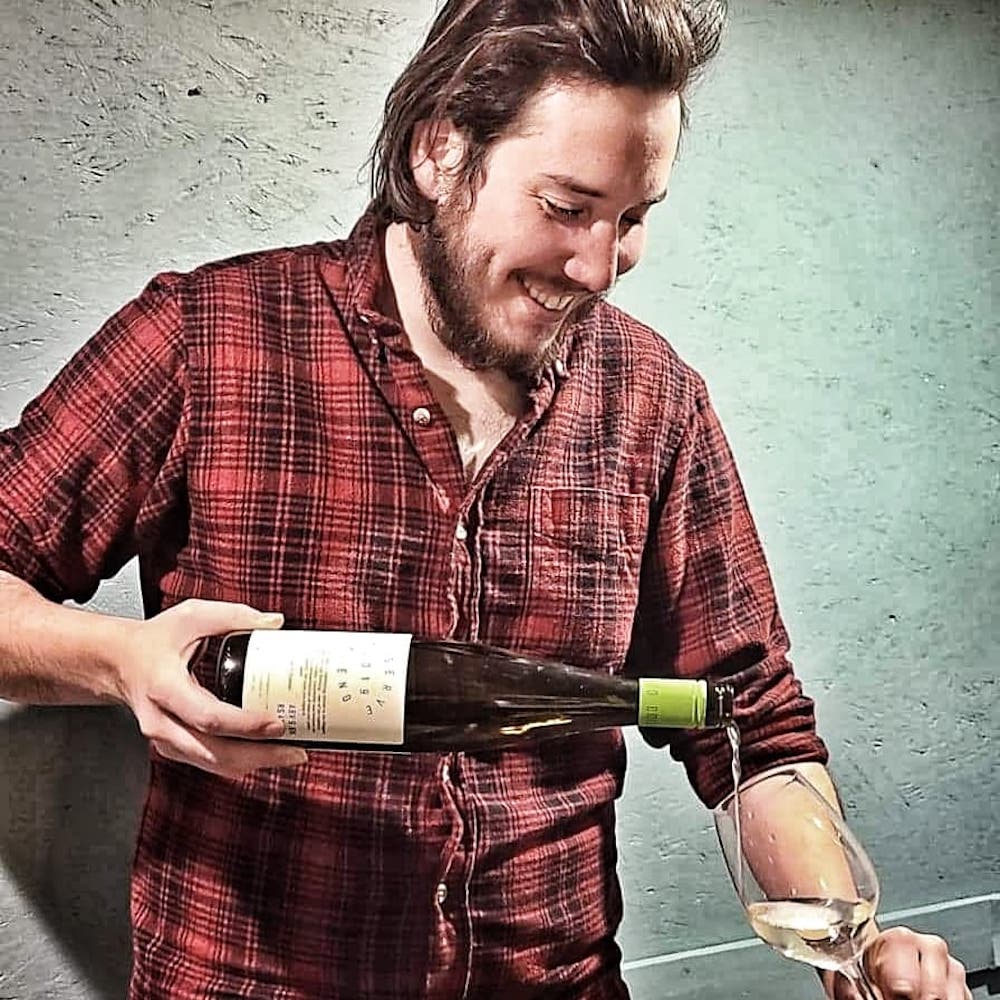
John-Daniel Steele, above, and Scott Woody, below, independently made their way to Niagara and began to seriously explore the region’s Riesling after “falling in love” with the 2008 Reserve Riesling from Henry of Pelham. Woody has been working in the vineyard and cellar of Bench properties since 2013 and has spent two winters doing harvests in the Bellarine Peninsula (Victoria, Australia). Scott brews his own beer, grows his own vegetables and makes his own hot sauce — “he’s the genius of the operation,” says Steel who has been working in Niagara wine hospitality since 2014 and passed his WSET III with distinction in 2018. He most recently completed back-to-back harvests in Burgundy and Alsace during the 2020 vintage.
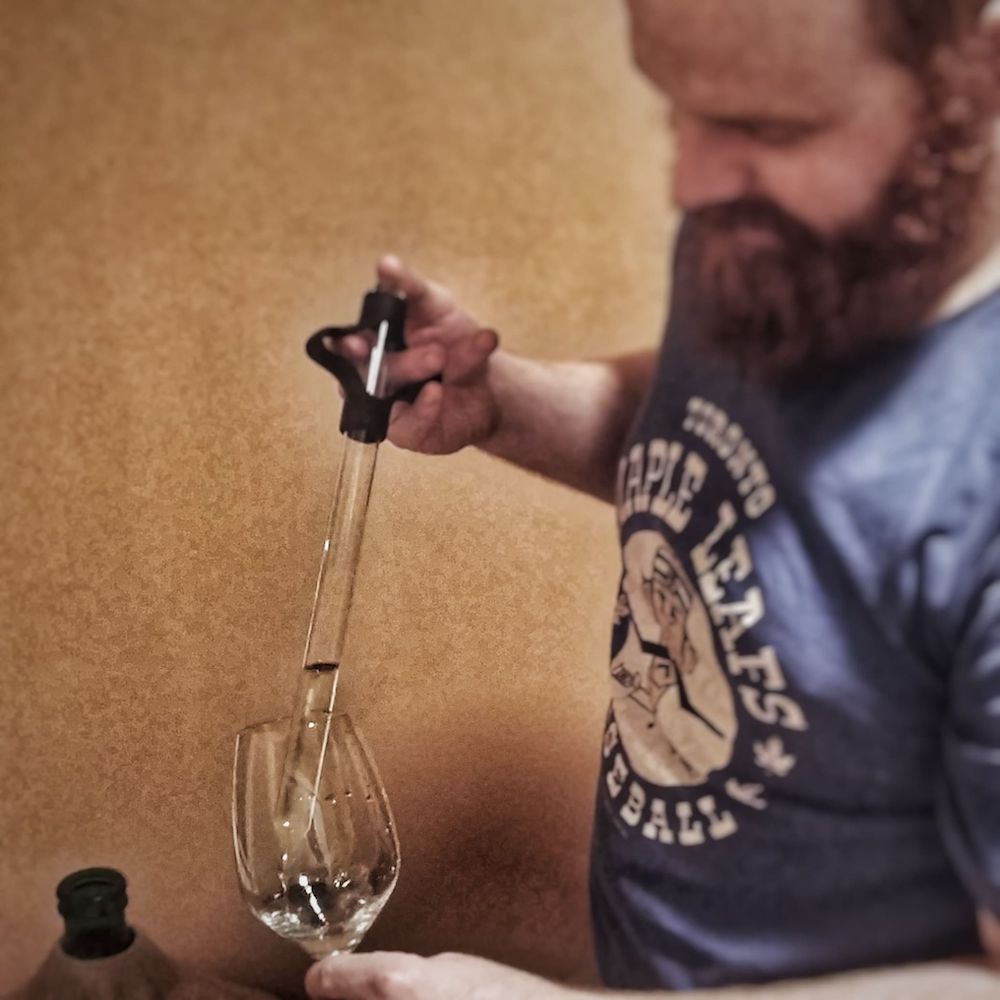
They have teamed up to create a new brand called Horseshoe Cellars, a virtual project still awaiting licencing. The duo has produced two vintages (46 cases total) under the label, which can only be enjoyed by friends and family while they await licence approval.
Wines In Niagara tasted two of the finished Rieslings from 2019 — a single vineyard wine from Wismer’s Foxcroft Vineyard on the Twenty Mile Bench, and a reserve bottling from a blend of two vineyards — Stouck Vineyard in Lincoln Lakeshore and Henry of Pelham on the Short Hills Bench. I’m impressed with where this project is going and really like the fact that another Ontario winery has decided to focus on just Riesling and explore where you can go with it.
Both wines are reviewed below, but first a Q&A with the project’s founders John-Daniel Steele and Scott Woody.
The Q&A
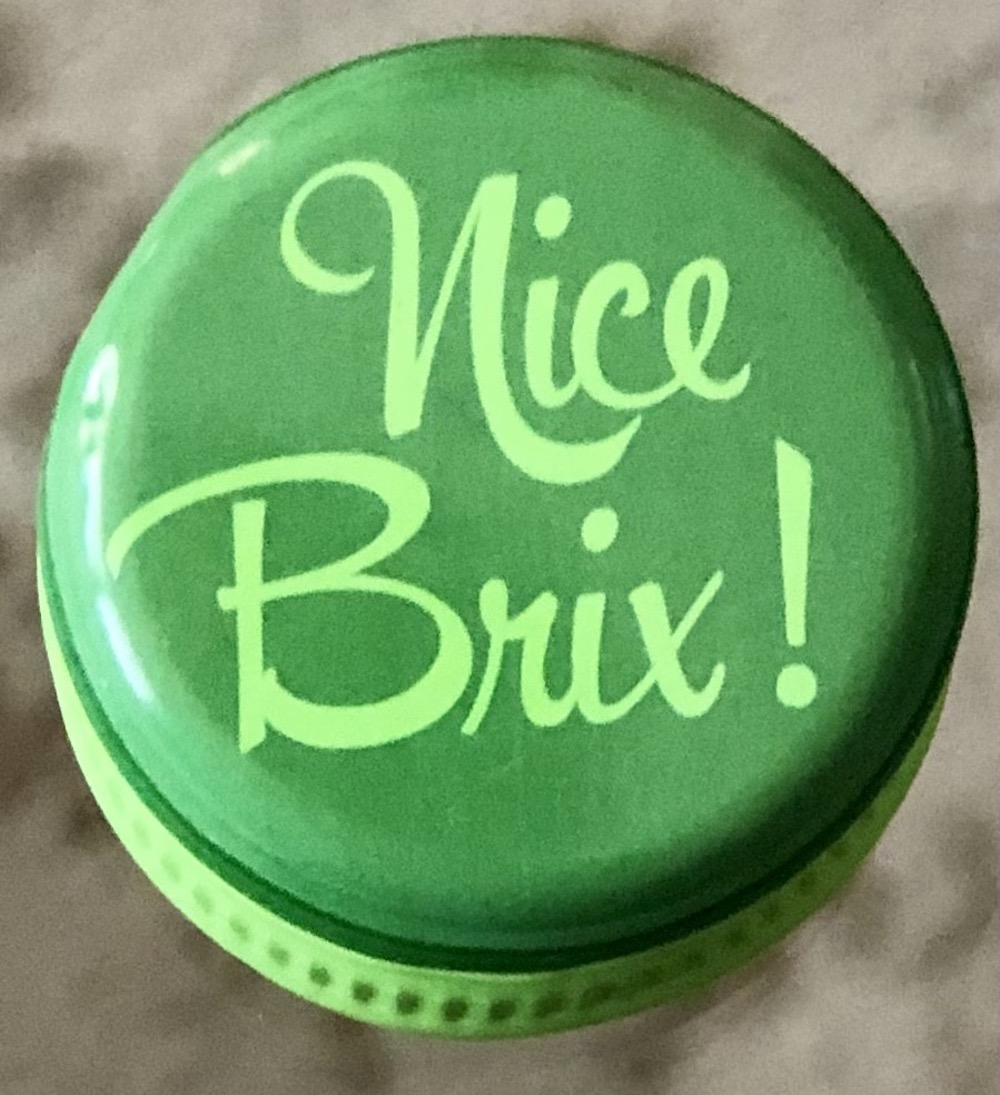
Wines In Niagara: So, I take it you are starting as a virtual winery focused on Riesling in Niagara. What is the plan going beyond the wines you have made to date? Do you have plans for a physical location or do you want to get established as virtual working off another licence?
Horseshoe Cellars: We will be starting as a virtual, hopefully (this year), barring any further COVID complications. Initially we will be releasing a single blend with single vineyard expressions to follow in further vintages based on demand. A physical location is always the dream and will be our goal as we develop our product and brand in the virtual sphere.
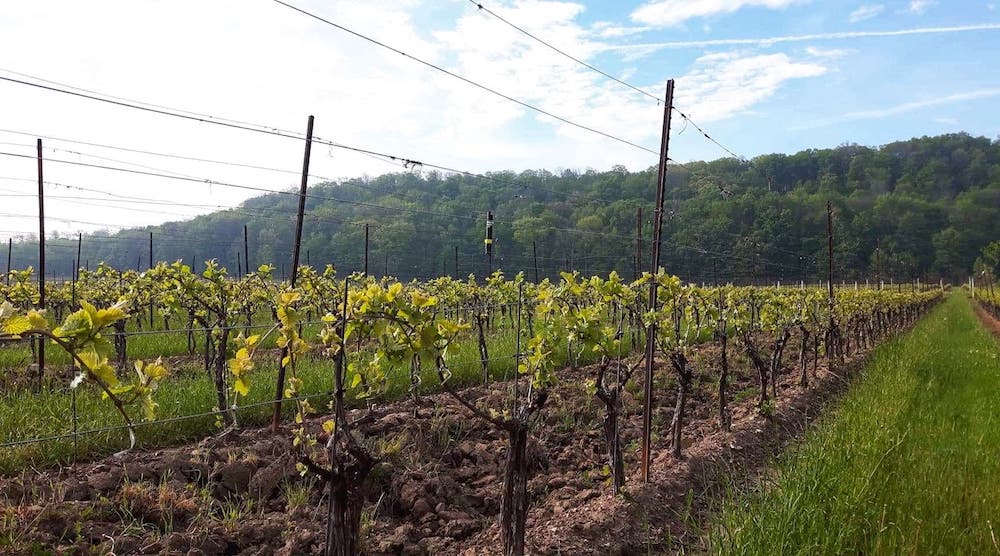
WIN: If your sole purpose is Riesling, a noble pursuit in my opinion, what is it you are trying show people with your project. I can only think of only one other Riesling-only winery in Canada, Charles Baker, so you would be quite unique in the mosaic of Niagara. What is it about Riesling that you are passionate about?
HC: Almost too much to answer in one question! We are hoping to simply share the diversity of Riesling, especially Niagara Riesling, with anyone who is interested in exploring this most noble of varieties. We love Riesling for its expressiveness. It is one of the most intense and complex varieties and shows terroir more fully than almost any other grape. It has wonderful flexibility depending on where it is grown. It can be done sweet, dry, or sparkling. It can be drunk young or old, with food or on its own. Each and every time you enjoy a sip of a quality Riesling, no matter what the context, you can be assured that the vintage, the land and the winemaker will speak to you with a unique, unabashed honesty. When properly treated, this variety has the most beautiful balance, the most incredible intensity and most marvelous complexity. In short, it is simply sublime and we cannot think of a better life spent than pursuing the perfect expression of this amazing grape.
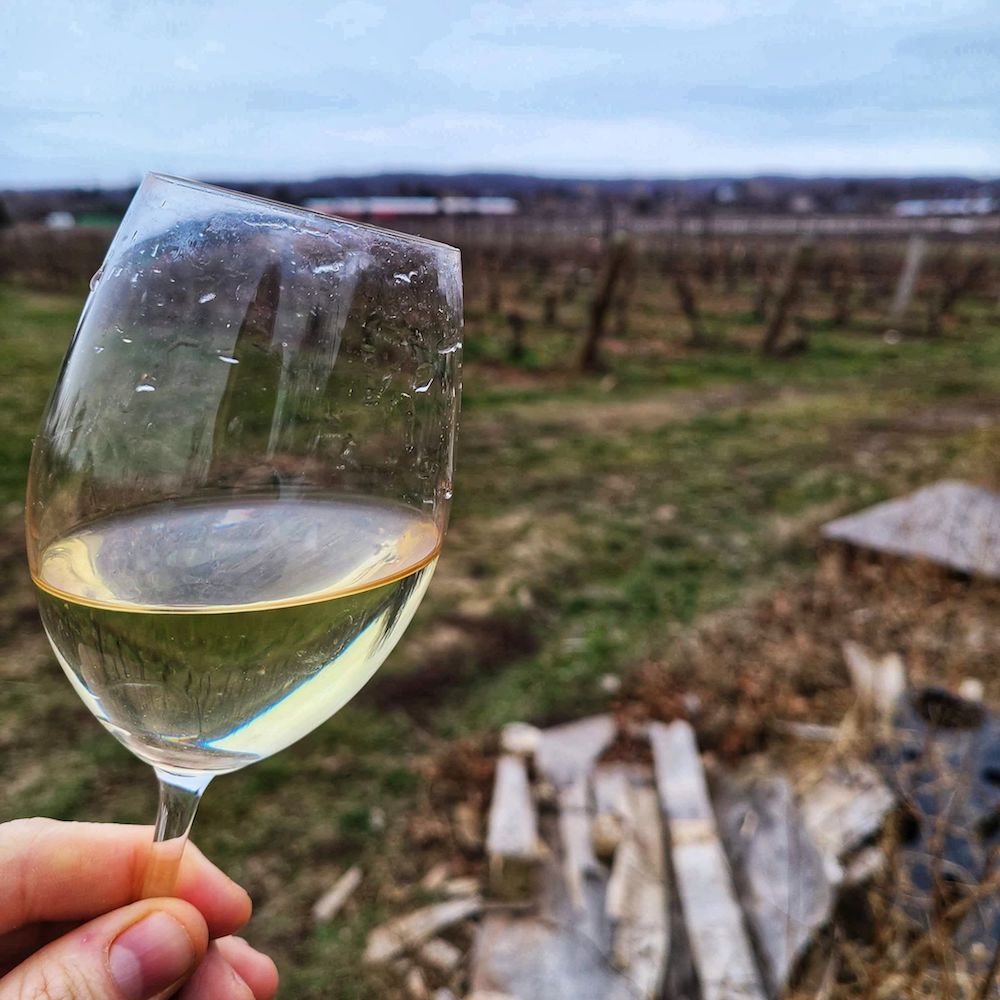
WIN: What is your winemaking style? The first two have wildly different RS and abv, so assume you are willing to try a lot of different styles. What drives your passion from the regions in Niagara? What is it about Niagara Riesling that makes you drop everything and launch a project in the middle of a pandemic?
HC: Our winemaking style is intrinsically linked to the vintage and the terroir. We let the location and year tell us what it wants to be. Sometimes it is a drier style, sometimes it is sweeter. Our focus is balance as opposed to RS levels. In our opinion it is not up to the winemaker to choose a particular “style,” it is for them to guide the wine to the most perfect balance. In Niagara, Riesling shows brilliantly across our many terroirs and is one of our flagship grapes. Unfortunately is doesn’t always get the care and attention it deserves and is therefore relegated to “cheap and cheerful” expressions. We would like to show that when treated with respect, this variety creates some of the best wines that this region has to offer.
WIN: What can we expect in the future? At what point can consumers check out your wines and how will they be able to get their hands on them?
HC: If all goes according to plan, our hope is that the 2021 Horseshoe Cellars Riesling will be available to the wine loving public by summer 2022.
The Wines
Steele and Woody are two B.C. boys who have been working in the wine industry in Niagara since 2013. “Our passion is Riesling; its expression of terroir, its complexity, intensity and balance. This project is how we share that passion.”
The prices on the Rieslings have not been established as of yet and you can’t buy it until the brand has a licence.
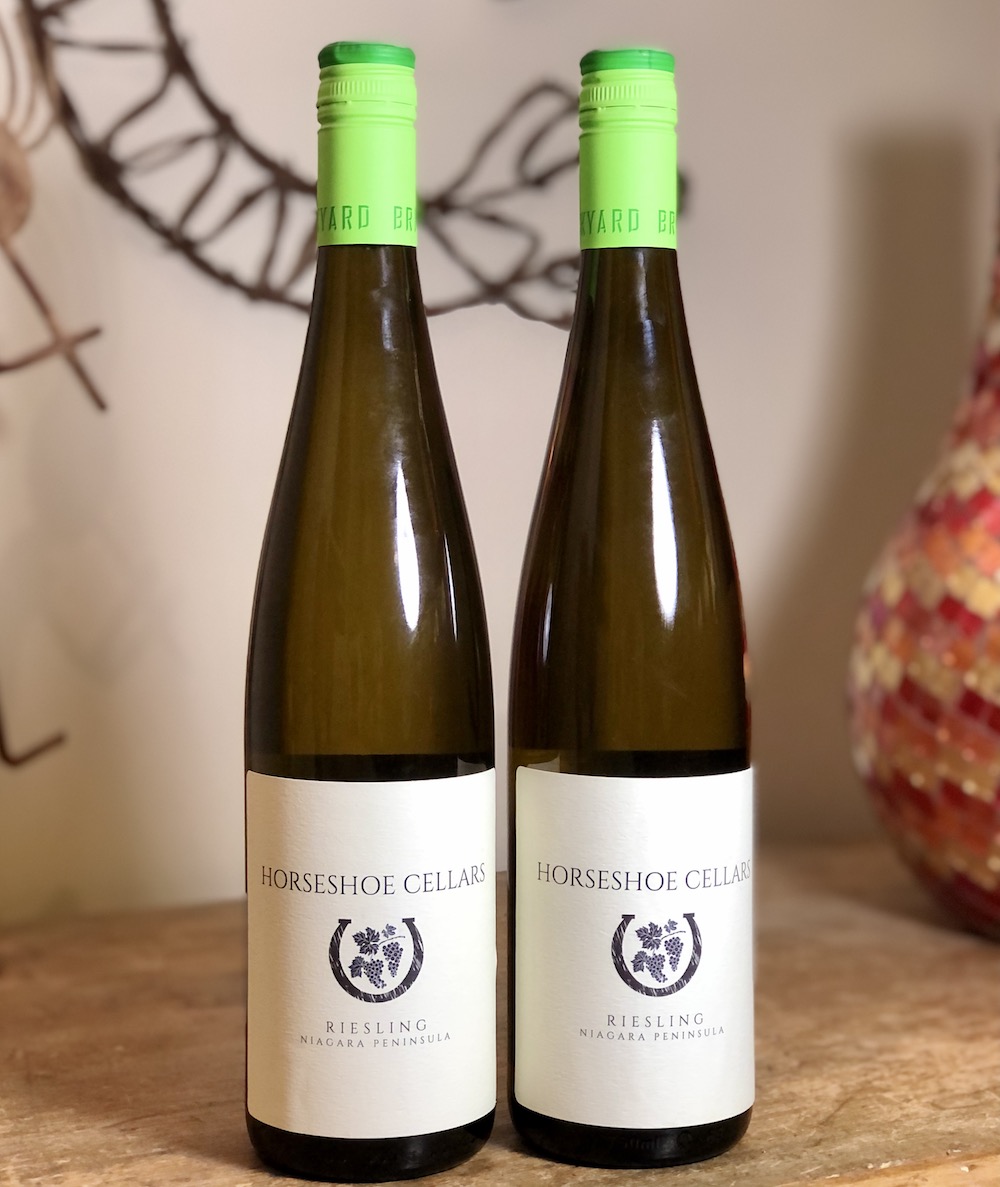
Horseshoe Cellars Foxcroft Vineyard Riesling 2019 — This is the drier of the two Rieslings, finished with 18 g/l and 11% abv, and single-vineyard sourced from the Twenty Mile Bench. It really shows off the terroir of Foxcroft with a nose of lime, grapefruit pith, fresh pear, bin apple and that lovely wet stone minerality that runs deep through this particular vineyard. It has a lovely saline feel on the palate with nectarine, lemon, lime, grapefruit, quince, stony minerality, a playful tug of sweet-tart fruit and a lingering freshness on the finish. Nicely balanced wine for extended cellaring.
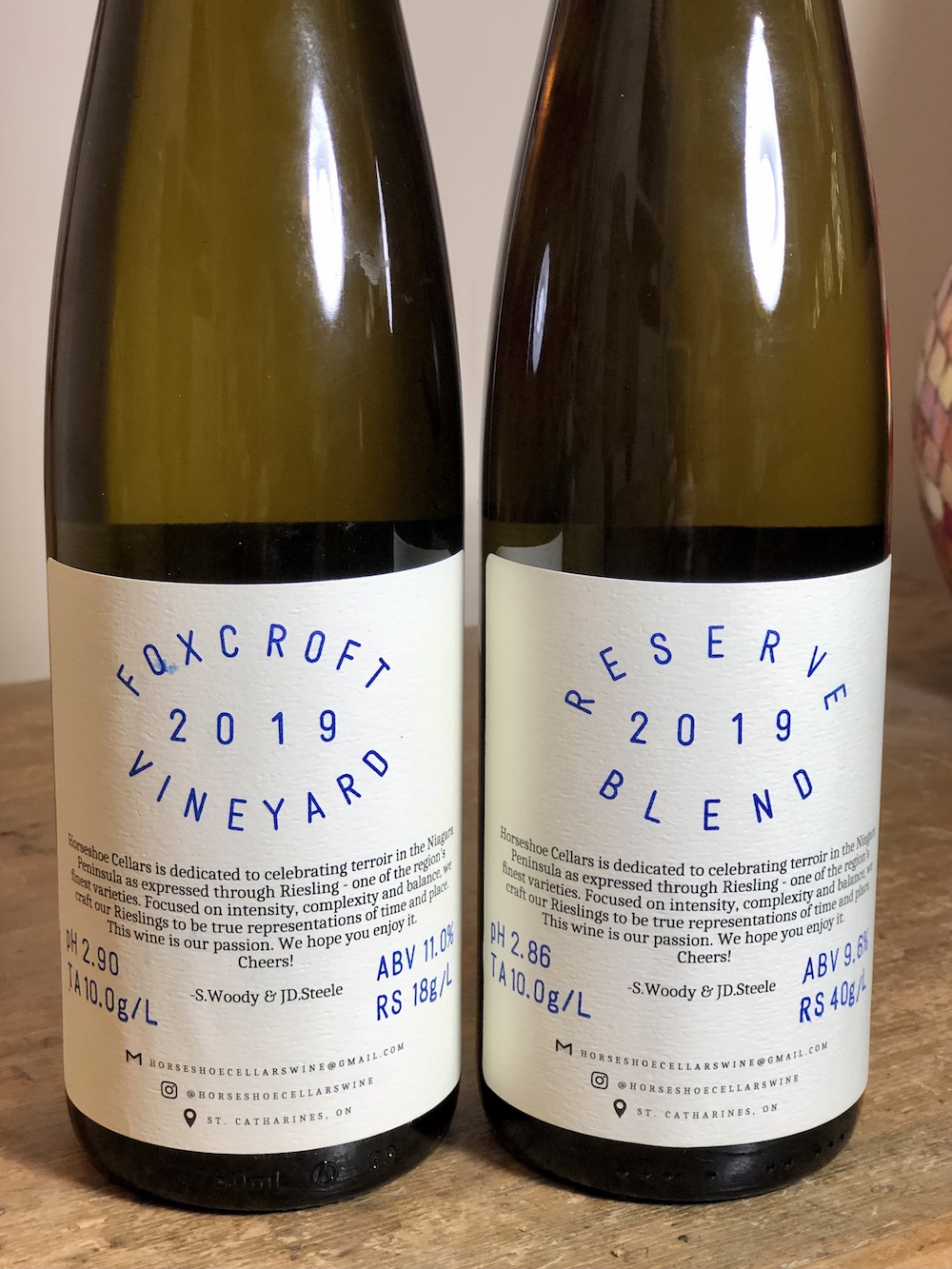
Horseshoe Cellars Reserve Blend Riesling 2019 — This is what Horseshoe considers its top Riesling of 2019. It is a blend of the Stouck Vineyard in Lincoln Lakeshore (55%) and a vineyard on the Short Hills Bench (45%). Each of the terroirs is vinified separately and the blend is created to express the best possible flavour and structure. It’s finished with 40 g/l of RS and a 9.6 abv. The nose shows pure lime and lemon followed by juicy pear, green apple, honeycomb and crushed river rock. It’s juicy and honey sweet on the palate but balanced out by the racy acidity. The range of ripe fruits include pear and apple then zesty citrus and lemon pith with a lovely vein of stony minerality on a lifted finish.
I’m really looking forward to seeing where Horseshoe takes this noble grape in the future. One to watch for.
Where to find Horseshoe Cellars:
On Instagram here


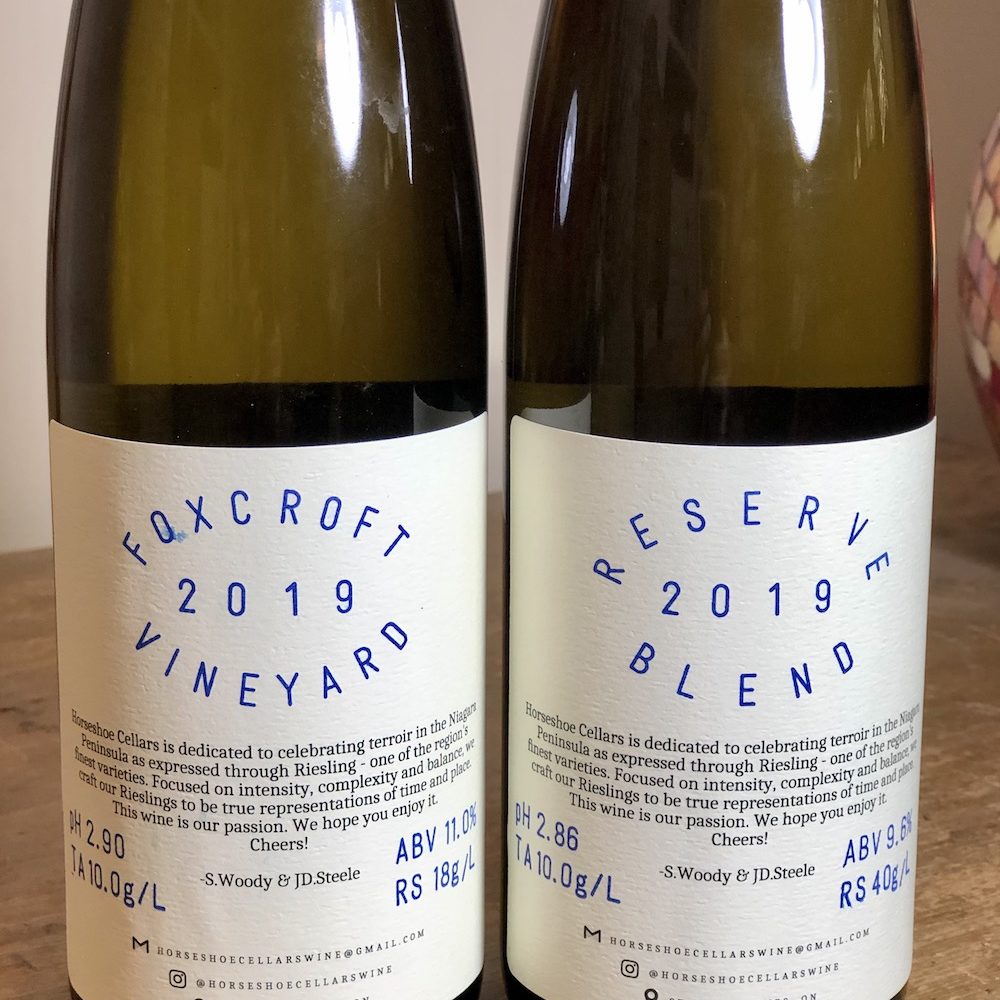






This sounds fantastic, can’t wait to be able to taste this one.